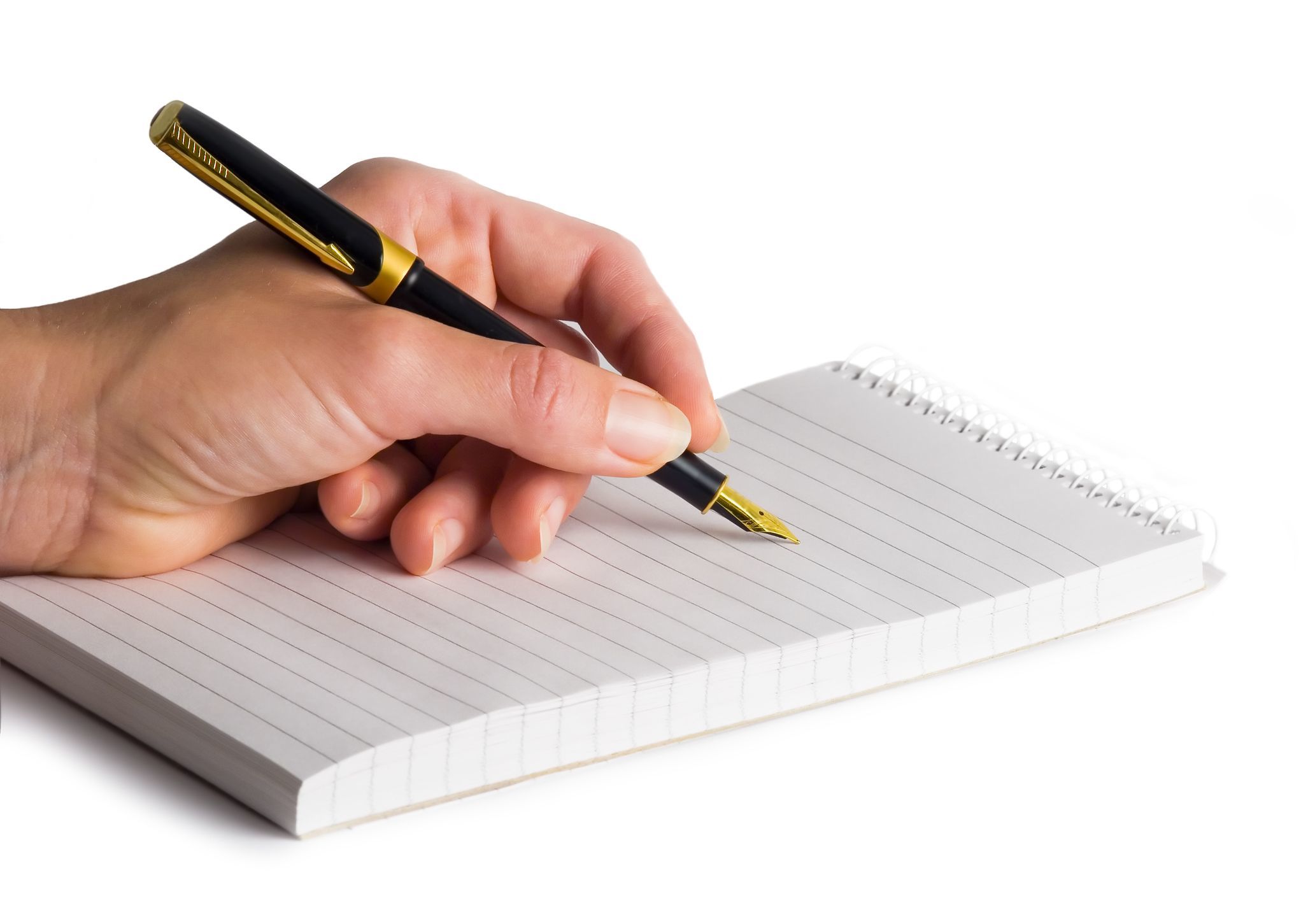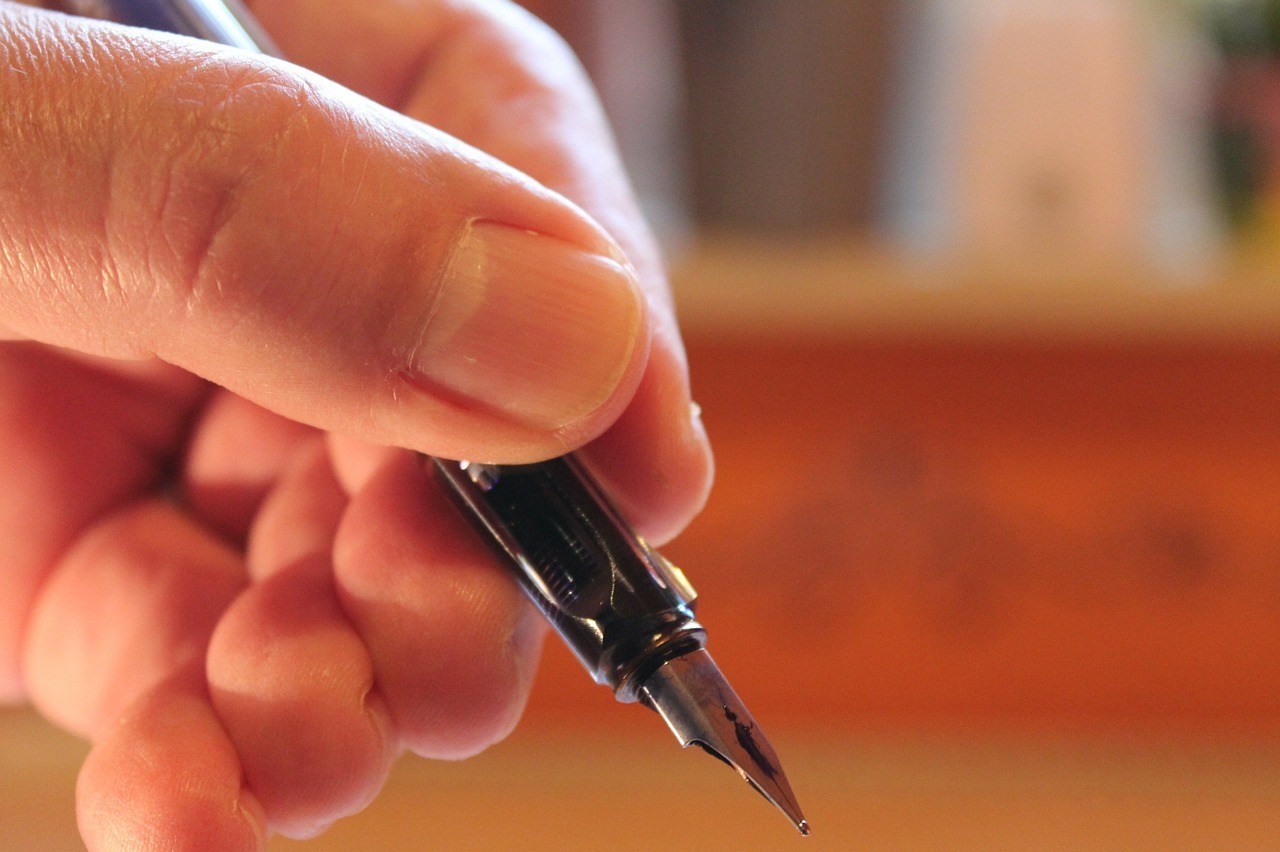How to Write With a Fountain Pen Left-Handed

Are you a left-handed writer living in a right-hander’s world?
Lefties have been conforming to righties throughout their lives - elementary school scissors, beginners baseball gloves, college desks, and bumping elbows with righties at the dinner table. But fortunately, this isn't true in every instance. Lefties - rest easy because fountain pens are used equally by right and left-handed writers.
Can left-handers use fountain pens?
Of course they can! When using a fountain pen, it seems as though a left-dominant writer’s hand will find its way over the newly written ink, smudging and ruining their work. This is a common misconception that create the idea that left-handed writers are not able to use fountain pens. In fact, only 10% of the world’s population writes left-handed, yet nearly all are just as inclined to use these fine writing instruments. However, some challenges and considerations do exist for southpaws (another name for left-handed writers) who use fountain pens that may not be true to their right-handed brethren.
Diversifying materials used in the fountain pen writing process makes for a pleasurable experience for both left and right-handed users. Although there aren’t specific left-handed fountain pen designs, southpaw should consider experimenting with different fountain pen nibs, inks, and papers. While one left-handed writer may fancy a thin barrel and flexible gold nib, another may prefer an uncapped thick grip with a stainless steel nib. It’s all a matter of experimentation and personal preference when finding a desirable fountain pen to fit you.
The way southpaws hold their fountain pen affects their penmanship as well. Just by circumstance, lefties tend to use techniques that have higher smudge rates more often than righties. Certain approaches to writing can yield a higher likelihood of ink smearing (such as holding your pen in the “hook” style, as discussed below). Nonetheless, some left-handed writers naturally adjust their writing to allow the ink to dry and thus reduce smudging.
What is your left-handed writing style?
Understanding your own writing style helps ensure a clear, smudge-free experience when using fountain pens. There are a variety of writing preferences, each style with its own level of comfort.

Overwriters v Underwriters
Two main writing styles for the lefty writer are overwriters or underwriters. Overwriting and underwriting is defined by the angle of the hand. Overwriters write with a sharper angle on top of the writing line, while underwriters position their hand below the writing line.
Overwriting (also known as an inverted position) tends to lead to smudged writing more frequently than underwriting. Overwriters lean the hand into the space at the far left of the paper, away from the fresh ink. With the pen at a small angle, the palm moves across the words most recently written. Though many lefties find this method comfortable, there are increased chances of their hand smearing wet ink. Positioning the pen at a larger angle with space between the bottom of the palm and the line of writing will allow the ink to dry.
Underwriting (also known as a non-inverted position) often leads to less smuding than overwriting. However, underwriters have their fair share of physical adaptations needed for fountain pen usage. Holding the pen at a sharper angle, as underwriters tend to do, can rip the paper. Increasing the angle of the nib to the paper can reduce tears. Underwriters also typically see their own hand more than the words being written because the hand is positioned below the writing line. To remedy this, consider tilting your head away from your writing hand, to see the wet ink as you write each letter. Being able to clearly see the page effects the writer’s penmanship and is an important aspect of fountain pen usage.
Some writing positions cause ink smudging or paper dragging that is heightened when writing with a fountain pen. Practicing various styles is a helpful tool for lefties using fountain pens. When trying out a new writing method, be patient. It may not come quickly, but the change can be worthwhile if you’re striving for a smudge-free experience.
Whether you’re an overwriter or an underwriter, there are few key elements to focus on when using a fountain pen:
Avoid Smudging
Many left-handed writers smudge their writing by directly moving their hand over their work. Here are some tips to avoid ink smudging:
Fountain Pens for Lefties
Although fountain pens are not designed specifically for southpaws, some offer unique features that accommodate to the writing styles of a left-handed writer. Ergonomic fountain pens provide a unique grip that create a larger slant or angle and can help writers avoid ink smudging. Their triangular shape forces fingers to hold the pen in a certain way to keep the hand away from wet ink on the page. Some ergonomic pens offer finger supports that allow the writer to clearly see the line of writing.
Among the vast array of inks, fast-drying inks can also help lefties avoid smudging. Fast-drying inks allow the writer to feel more at ease while moving their hand across the page. Experiment with various brands to ensure that your ink choice meets the level of desired feathering when writing.
While fountain pens are not designed specifically for southpaws, nibs can offer a satisfying experience for the left-handed writer. Nibs with a finer point create thinner lines that dry faster. These nibs allow the left-hand to glide across paper and alleviate any flow issues without smudging. Avoid sub or flex nibs, as they can pose potential smudging problems. Their ability to allow a larger flow of ink onto the page will most likely result in a smeary mess.
There is no paper specifically created for southpaw writers, but some designs work better than others for use with certain fountain pens. Try out different types of paper (satin finish, classic composition, or lightweight versions are among the available options) with your chosen fountain pen to be sure the flow of writing and ink drying adequately aligns.
Lefties Love Fountain Pens
Despite fallacy, left-handed writers can use and enjoy fountain pens just like righties. Southpaws can reduce concerns with smudging simply by adjusting their hand position. Experimenting with different pens, papers, and inks can enhance the use of fountain pens. When matched with a comfortable writing style and instrument, fountain pens provide a pleasurable, distinctive smooth motion for left-handed writers.
Sources
Please comment and share below
Although this article is comprehensive, the information presented is only as accurate the material we were able to source, and is by no means exhaustive, authoritative, nor complete. If you have additions or corrections which you believe should be included in this page, we invite you to include your comments below. Please consider sharing both the citation as well as the new information with us. Our goal is to foster an open dialogue with our readers.
Please also share the article with fountain pen or ballpoint pen enthusiasts. We appreciate you spreading the word!


